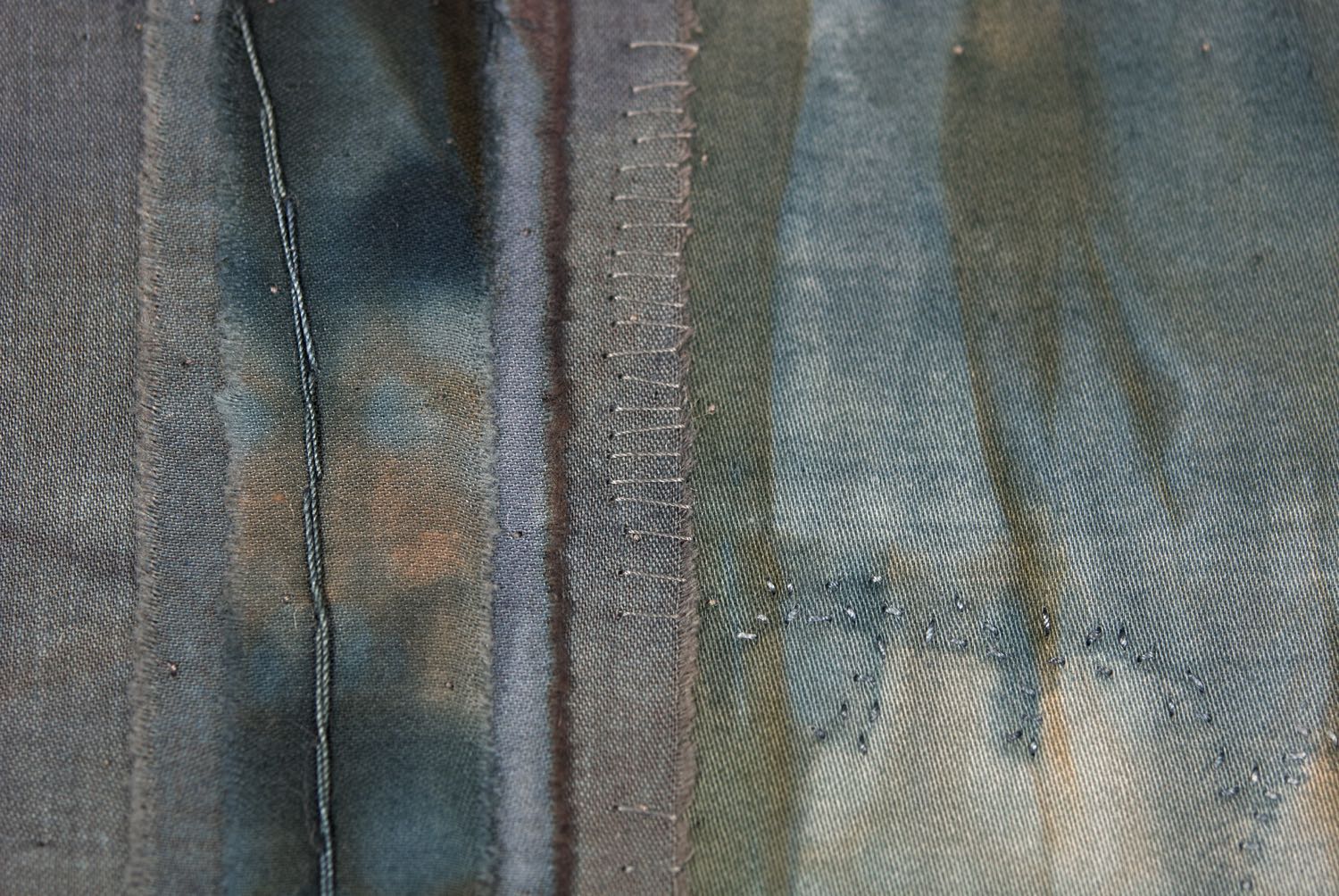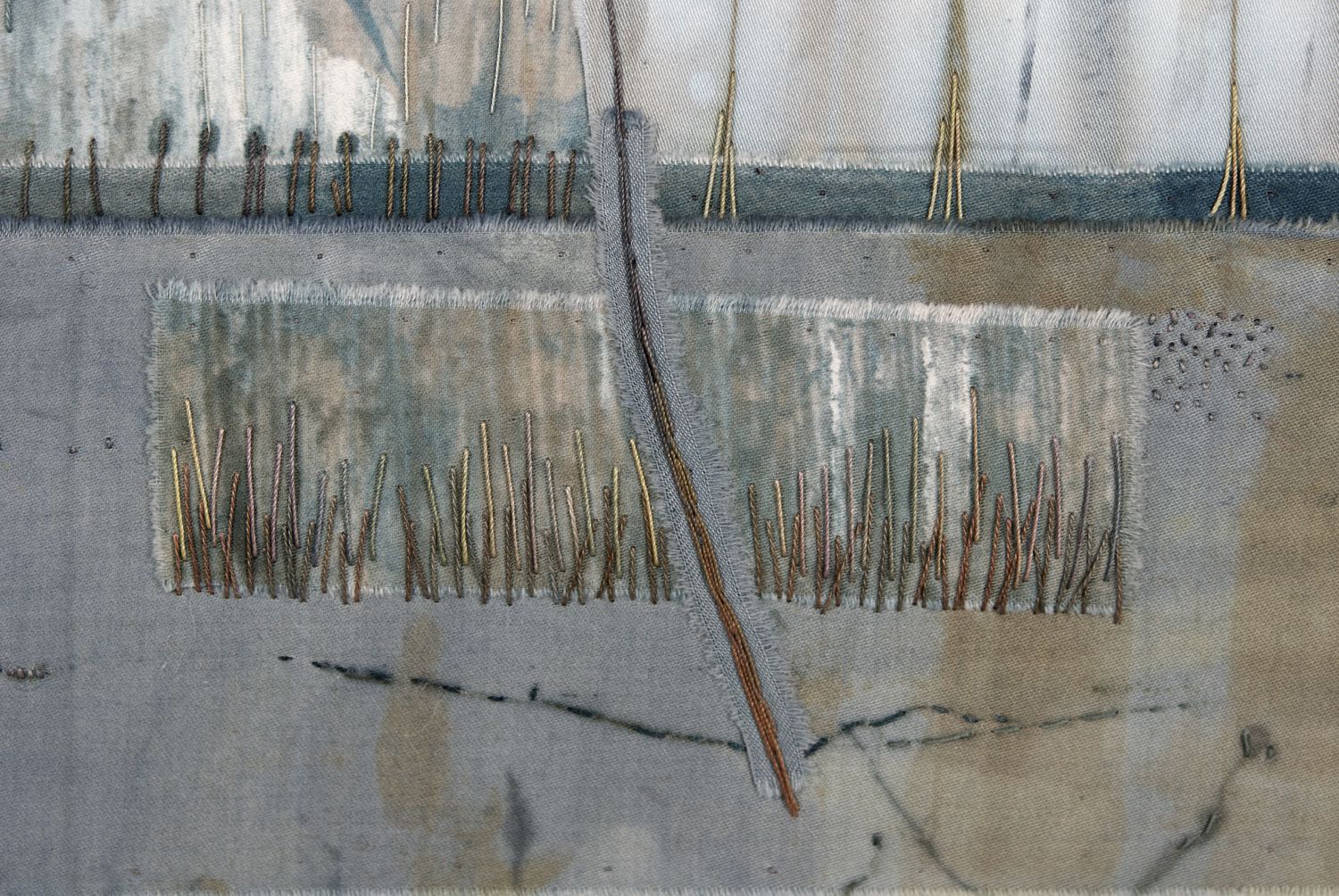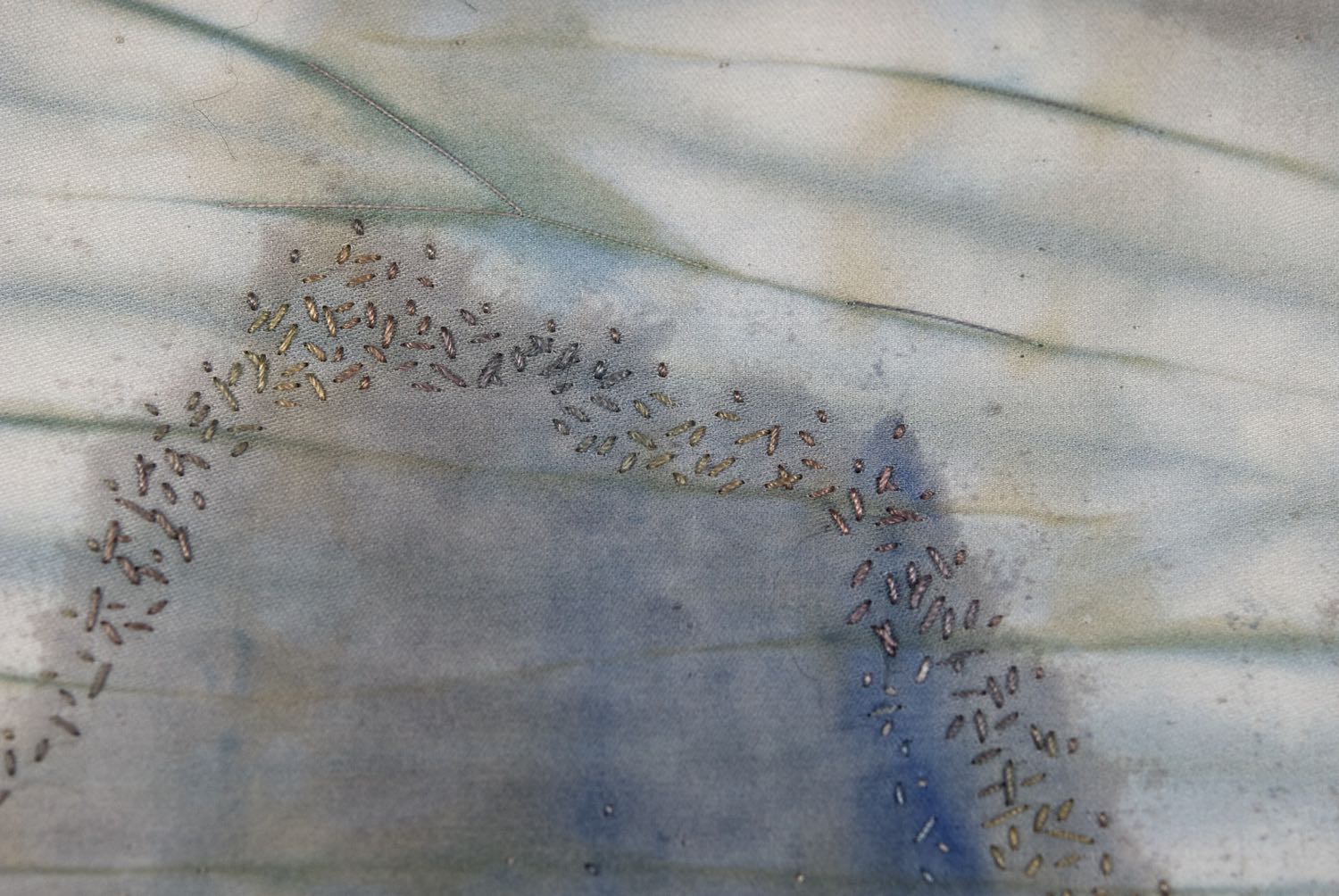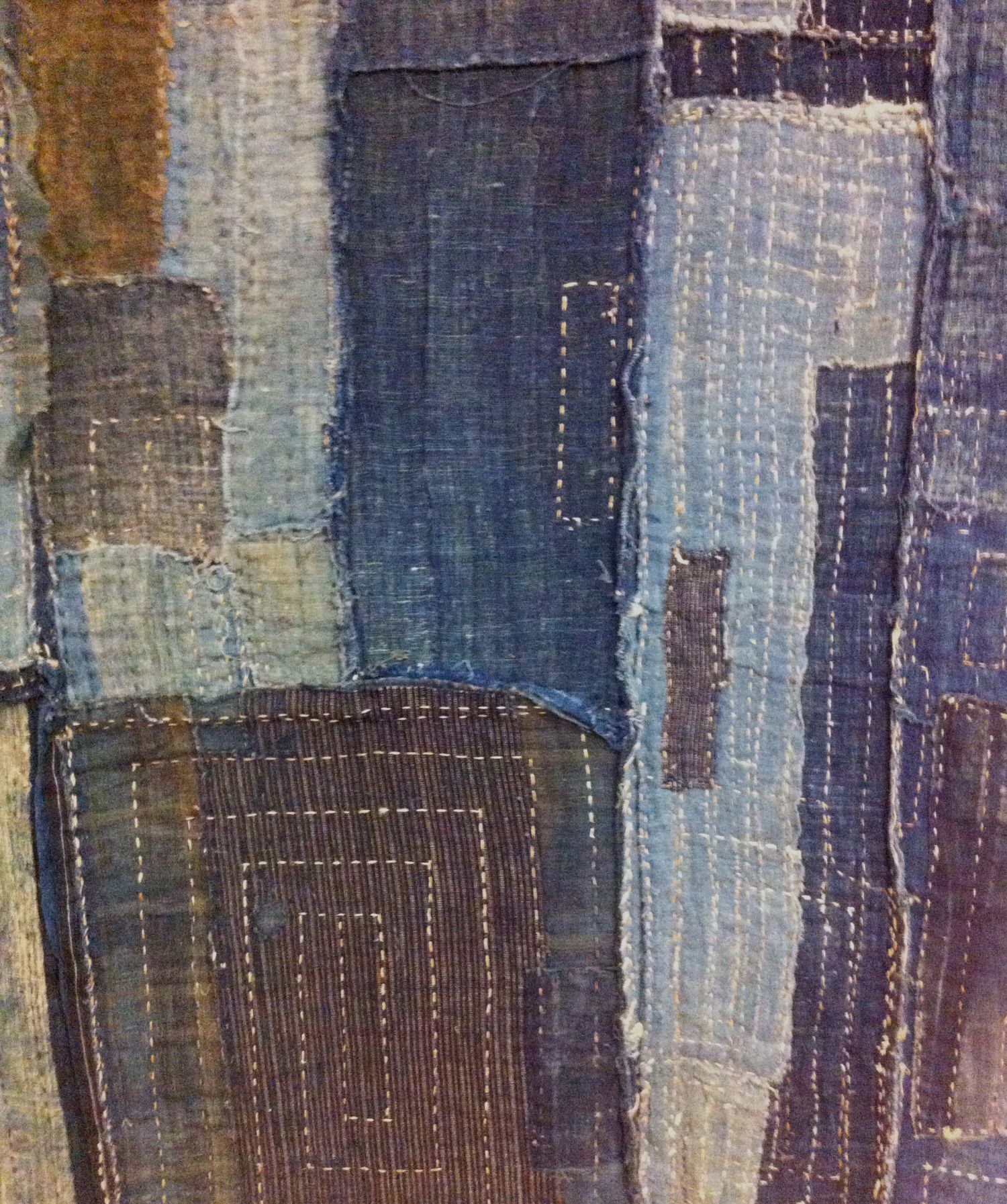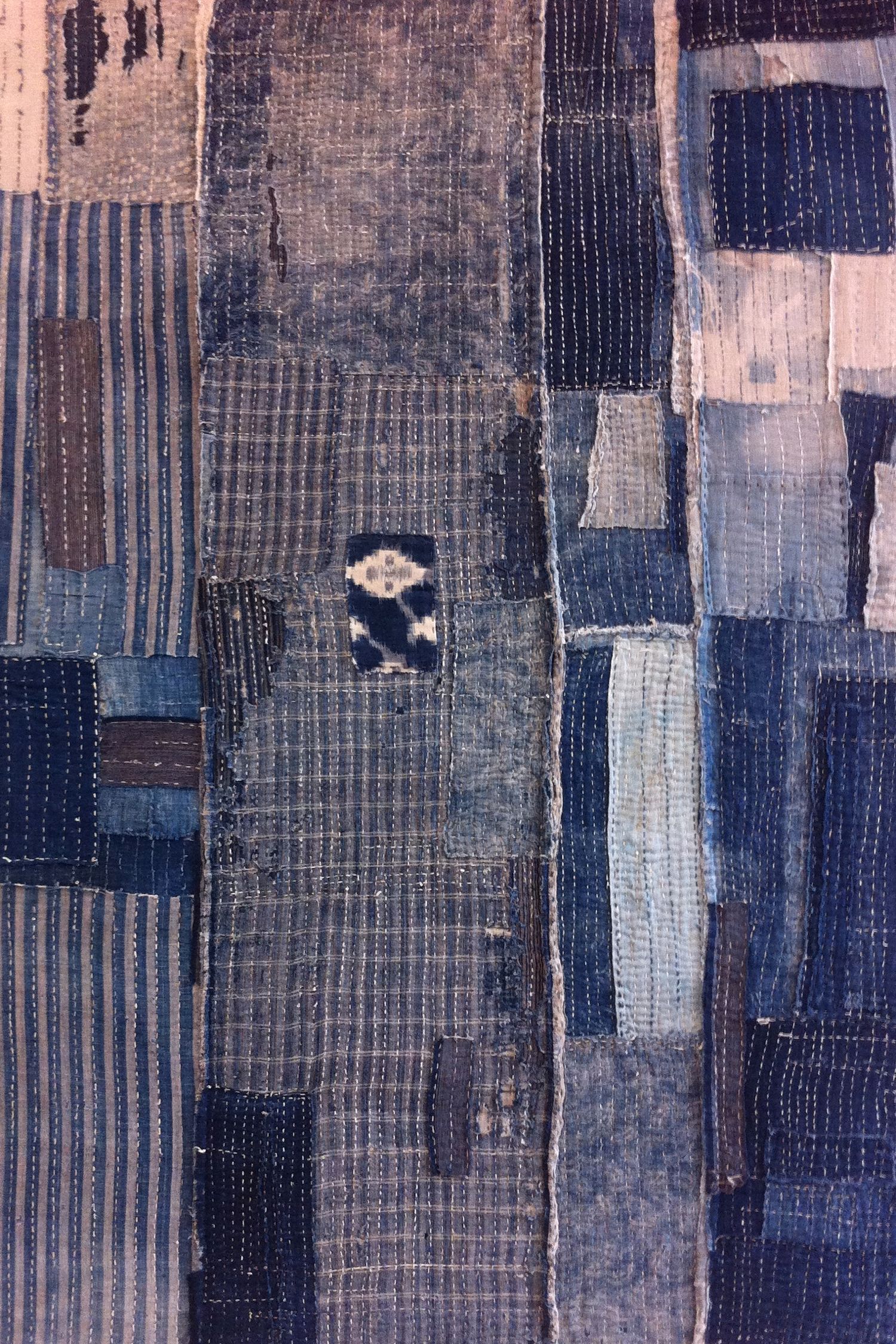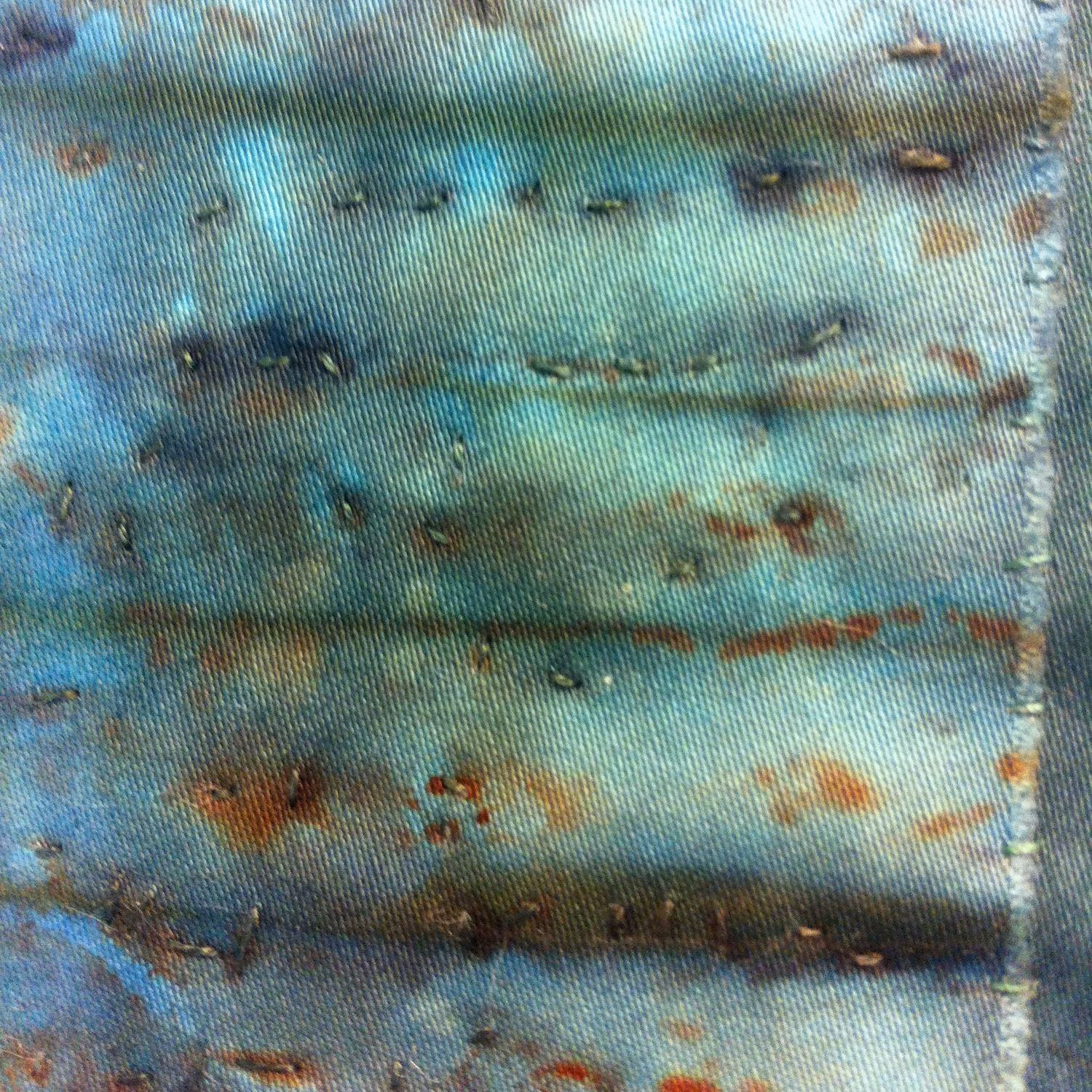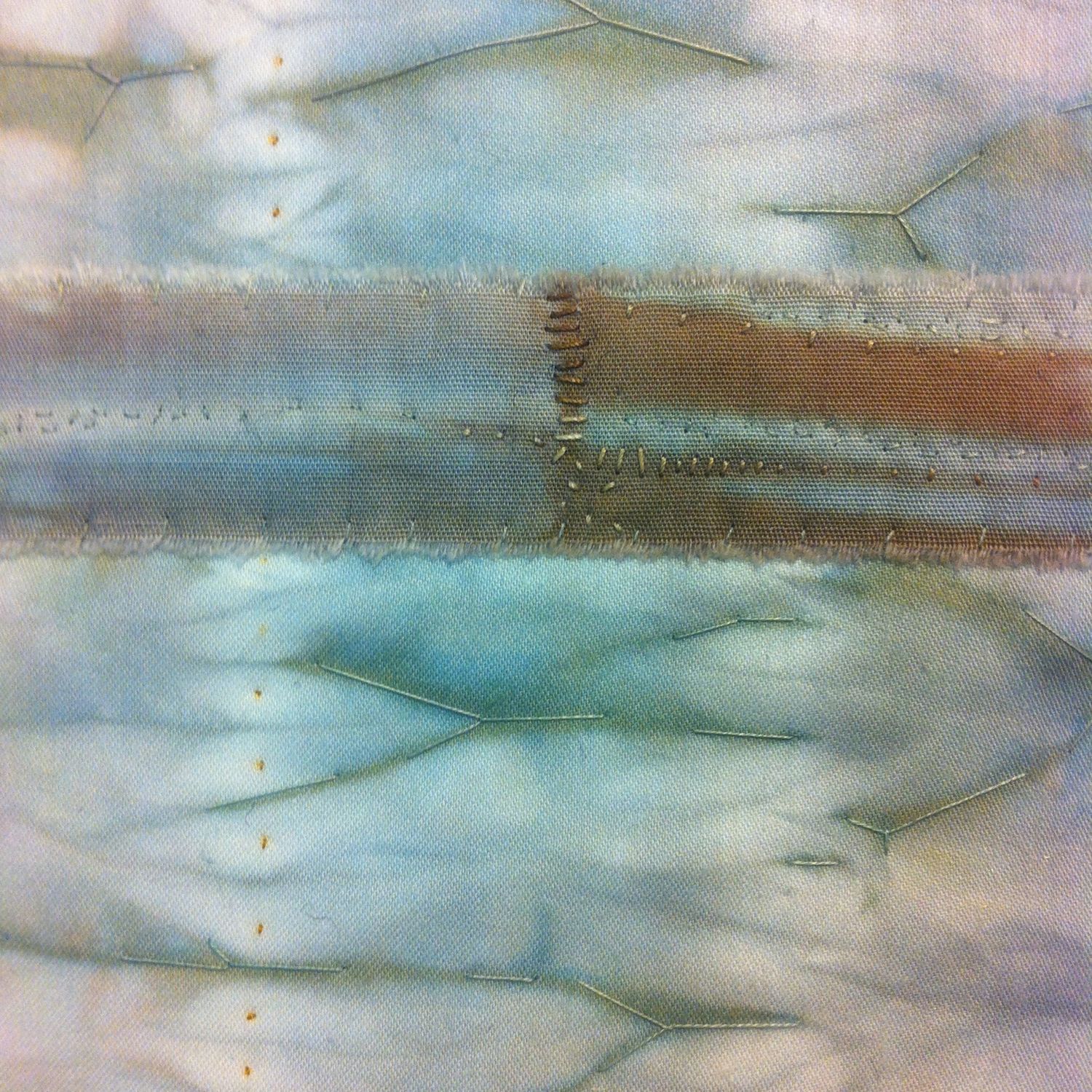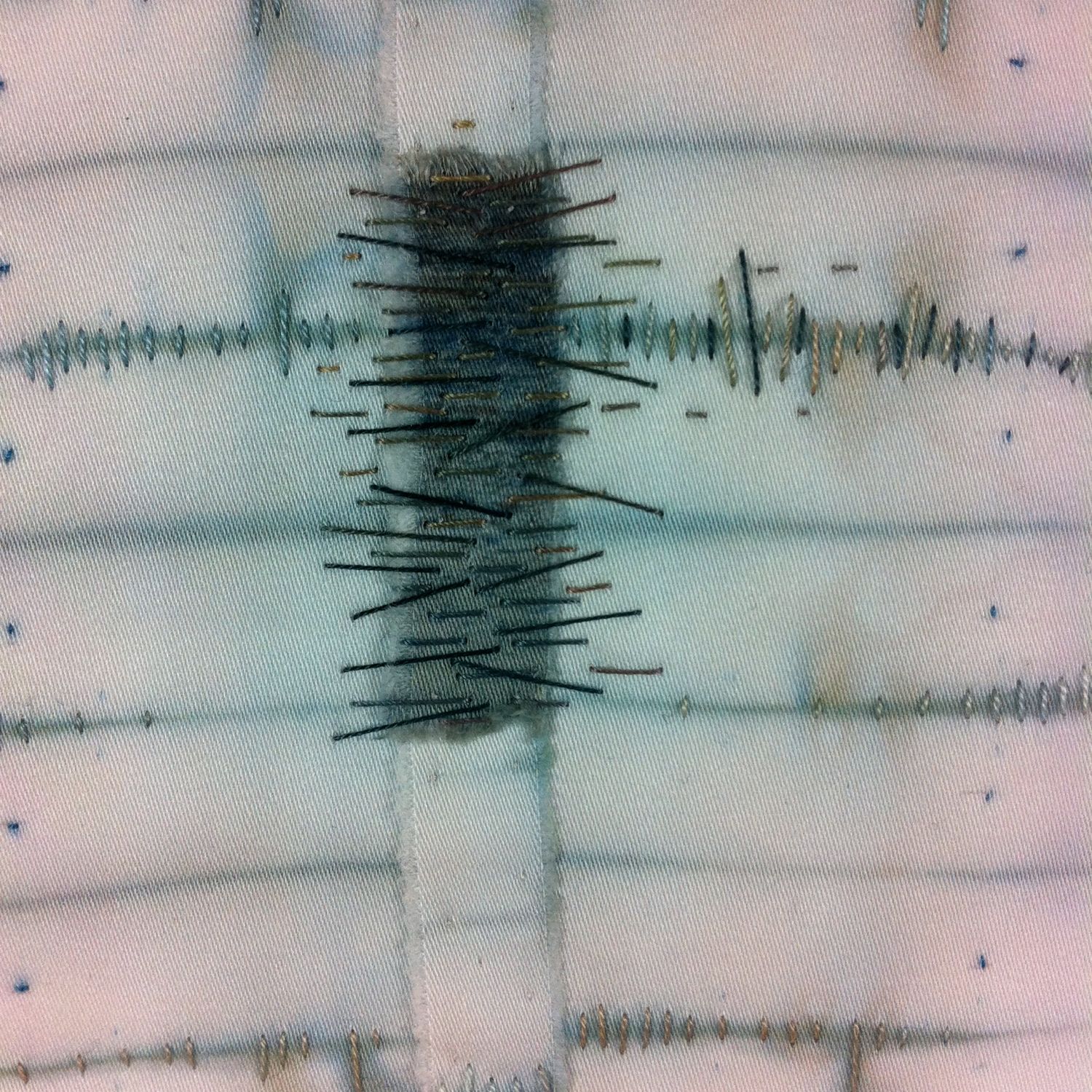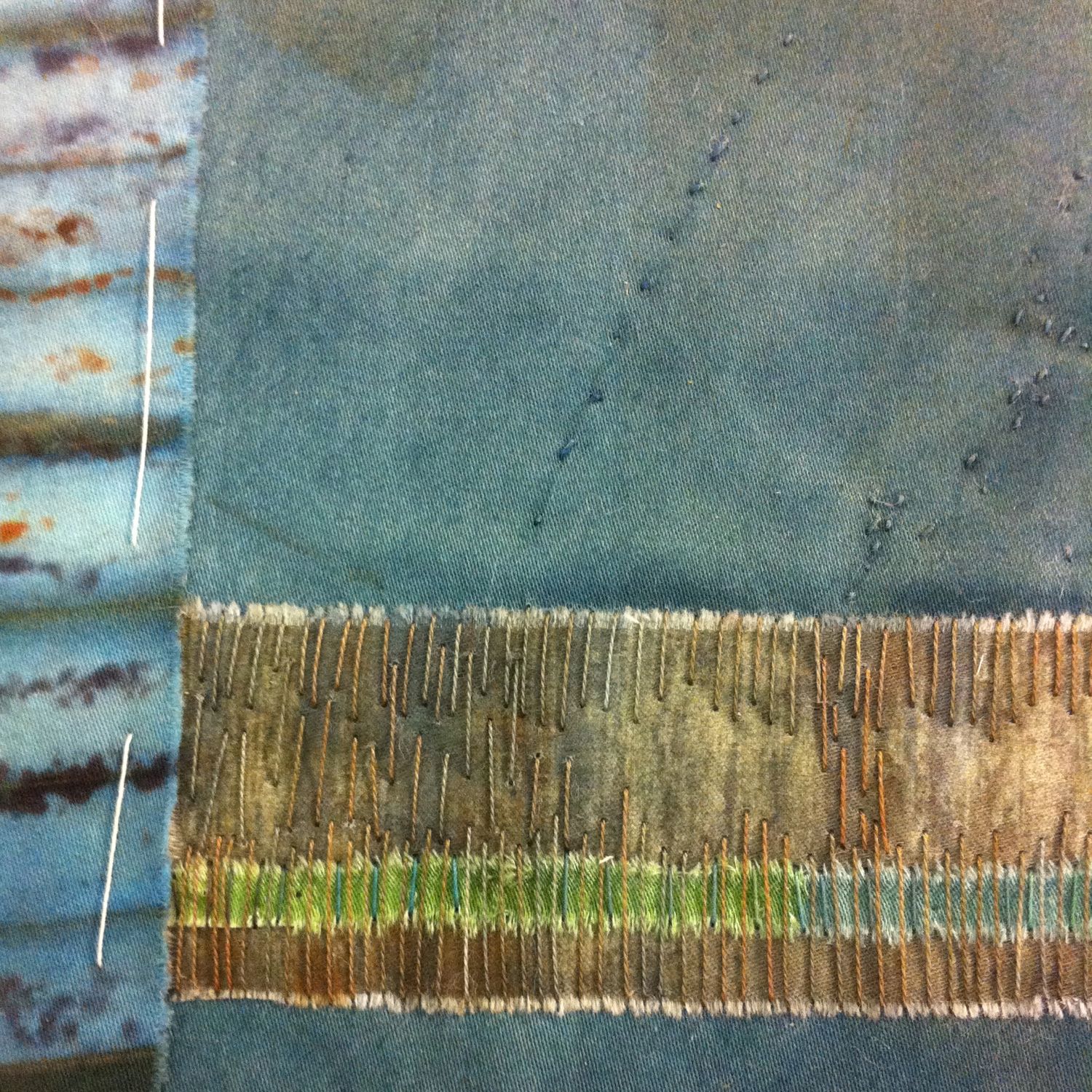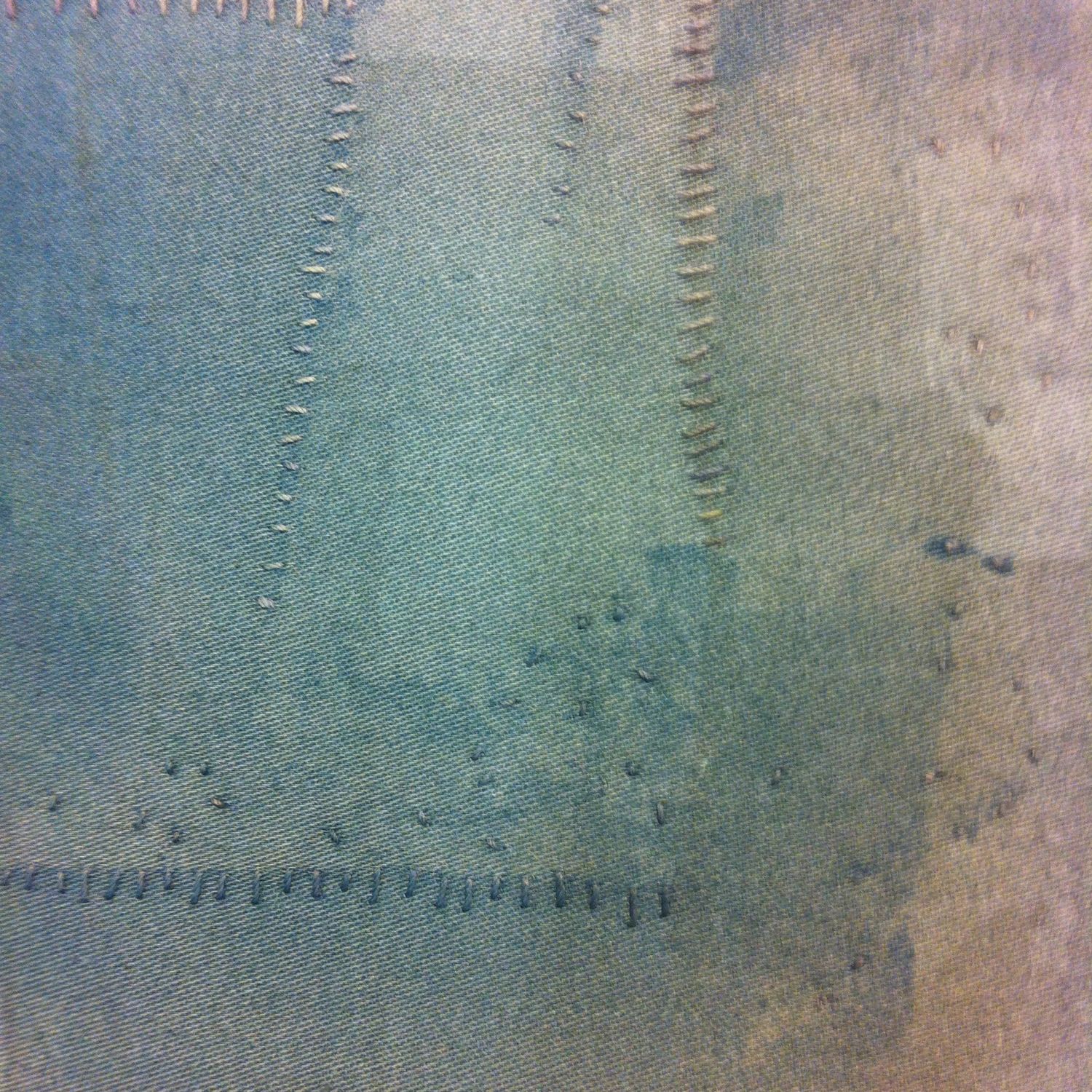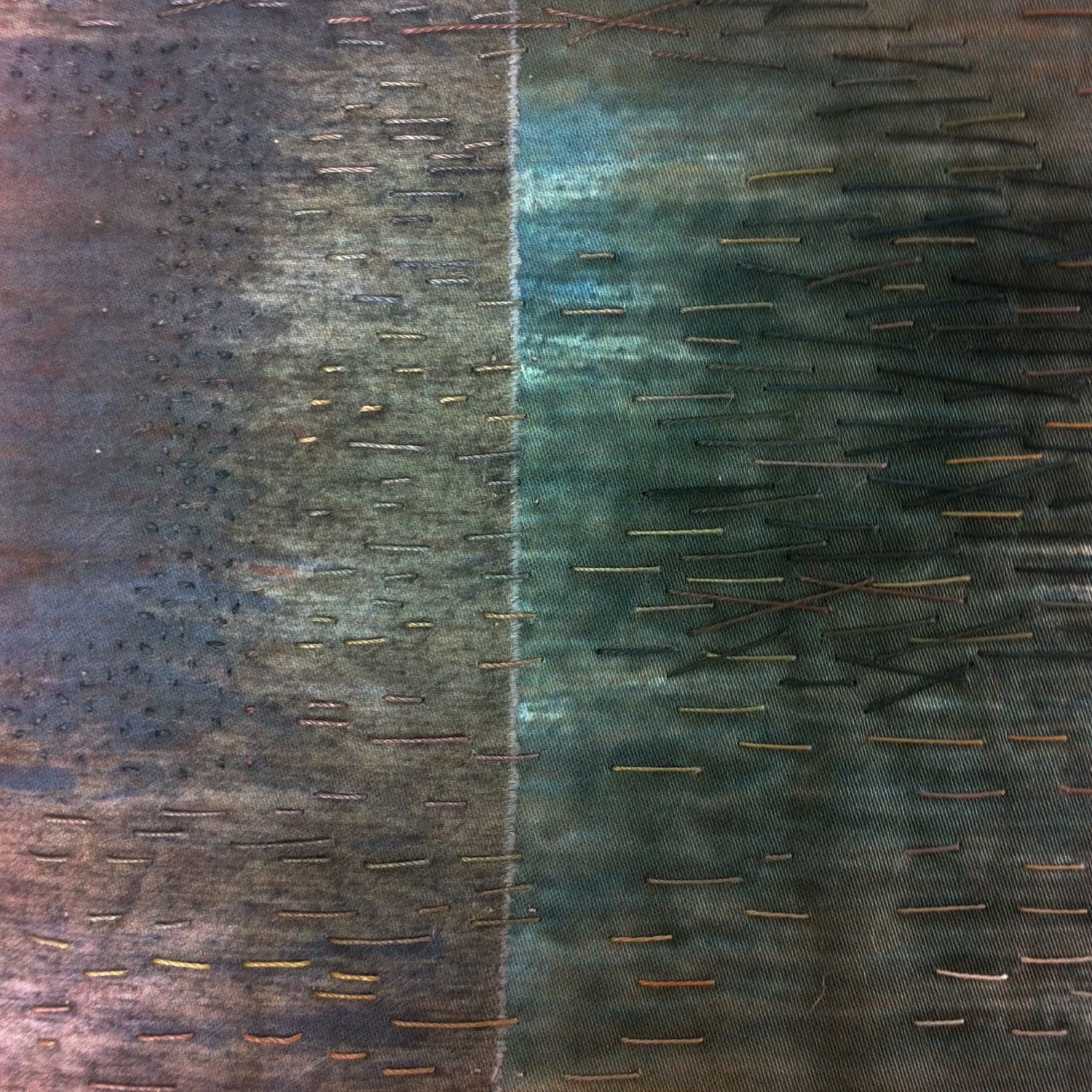In early December I planned out all the work I needed to do. An exhibition in February means work has to be ready for framing … around now actually. It was all perfectly possible on paper. But it’s one thing to block out time on a plan and write “stitch work”, for example, and quite another to actually do it. In the studio I surveyed the pile of work I needed to finish and felt slightly terrified.
A deadline is a wonderful thing for getting focused. I dropped or deferred everything that did not contribute to getting the work done (including this blog) and settled down to work. Apart from a couple of days with my family, I stitched all the way through Christmas.
It goes something like this. I pull out each piece of work and lay it on my studio table. In this case I had already stitched them all to a backing fabric. Canvas this time (I had my reasons but never again – my poor fingers). I lay out different threads on top of the work until I have a palette I want to work with. Silk, rayon, cotton – some matte, some shiny. Mostly very fine in weight. I look at the piece of work for a clue as to what to do and where to start.
Mostly I work with the marks on the cloth, sometimes I work against them or look to add marks where there are none. I will have an idea what I want but not usually a plan for the whole piece when I start. I will know where I want the emphasis to be but otherwise I will ask myself as I am working what the piece needs.
Occasionally there is a piece where I don’t know what to do. When there is a type of mark I haven’t worked with before. Or the marks in the cloth are so subtle that I am really not sure what to add – or whether to add anything at all. In this case I just try something. If it doesn’t work, I pull out the stitches and try something else. Change thread. Larger stitches. Smaller ones. A different kind of mark. Dense layers of marks – or sparse and widely spaced. I take photographs – sometimes it’s clearer what you need to do when you look at an image of it.
For two weeks I worked like this for six to ten hours a day. I listened to music or radio documentaries. Sometimes I worked in silence. If this sounds relaxing, I can’t say that it was. There was a tension between the slow, patient hand work and the underlying sense of pressure to get everything done. This was a consequence of working to a tight schedule, not the experience of slow stitch. And there wasn’t time to play around or experiment too much.
As I worked, ideas came to me – things I want to try. Not just stitch ideas. I jotted them down in my sketchbook so as not to lose them and kept working. I was mildly frustrated that I couldn’t afford the time to stop and do other things. Which made me ponder the value of both work and play. I remembered how earlier in the year I was frustrated that I didn't know what to do and was not “working” and used play and experimentation to keep myself going. The work I am doing now derived from that period.
Anyway I am now preparing a pile of finished work for the framer. I have some admin things to do but otherwise I will soon be through this phase of work. Then I am going to do something else for a while.
Exhibition details:
I will be showing some of this new work in an exhibition alongside paintings by Stephanie Stow and Elaine Cox at Bircham Gallery in Holt, Norfolk from Saturday 13 February until 9 March.
I also currently have some work in a mixed show at The Bank in Eye, Suffolk. The exhibition, Abstraction of Form, runs from Tuesday 19 January until 28 February.
















